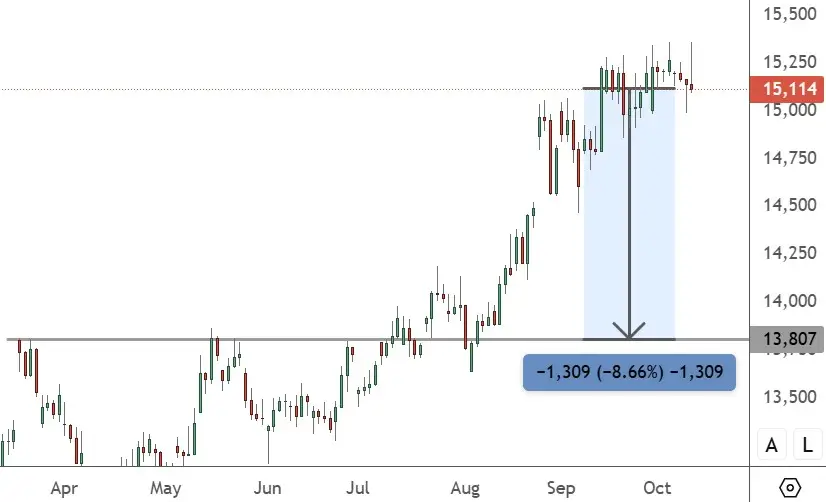U.S. stock markets dropped by up to 4% on Friday, but similar losses were seen in the after-hours market. China’s share market could lead Asian markets lower on Monday after trade tensions with the U.S. turned sour.

CHINA 50 – Daily Chart
The China 50 sold off into the close on Friday, and if we project losses of -8%, we can see that it brings the index back to the stubborn April-August levels. That could be seen as the best place to wait if selling continues on Monday in global markets.
Markets in the U.S. were rattled after President Trump announced a 100% tariff on Chinese imports. China hit back over the weekend, saying the move shows “double standards”.
Trump also announced controls on “any and all critical software,” from November 1. He also threatened to cancel a meeting with Xi in Korea. The latest move came after new port fees on U.S. ships and an antitrust investigation into chip maker Qualcomm. Rare earth protections were also introduced.
“For a long time, the U.S. has overstretched the concept of national security, abused export controls, taken discriminatory actions against China, and imposed unilateral long-arm jurisdiction measures on various products, including semiconductor equipment and chips,” the Ministry of Commerce said.
Friday’s market sell-off was a slap in the face for stocks after they had ignored the U.S. government shutdown, which is now projected to last 32 days.
Markets in the U.S. have suddenly forgotten about the interest rate obsession, and it is midweek before any data on CPI inflation is released on Wednesday.
China’s stock market had just been celebrating a ten-year high last week, but is likely to lose ground on Monday due to the harsh new tariffs. The latest events are also a setback for any kind of deal between the world’s two largest economies.
The Asian market opening could be volatile as markets absorb the changing trade climate.


